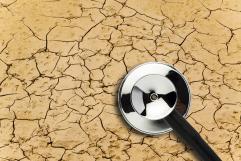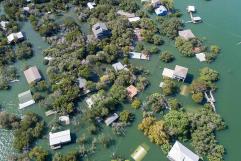
The danger of high temperatures
Extremely high temperatures directly cause an increase in mortality due to cardiovascular and respiratory diseases, particularly in the elderly. In Spain, since 2004 work has been carried out with the National Plan for Preventive Actions for the effects of excessive temperatures on health, by the Ministry of Health. This plan works particularly on the care of chronic patients, the elderly, obese people and other those with other pathologies, people who consume drugs or alcohol or who are in treatment with certain medications and groups of labourers who work under extreme heat conditions, according to sources from the Observatory of Health and Climate Change at the Ministry of Health. High temperatures also cause an increase in the ozone levels and those of other air pollutants that aggravate cardiovascular and respiratory diseases.
The number of vulnerable people exposed to heat waves has increased. When the temperatures are very high, the body activates its defence mechanisms to maintain the body temperature within a safe range. For example, the blood vessels dilate to increase the blood flow and more perspiration occurs to cool the body down by evaporation. But these mechanisms have their limits, particularly in the most vulnerable population groups. In 2016, there were 125 million more people over the age of 65 years who suffered from the effects of heat waves than in the year 2000, according to the Lancet Countdown 2017 report. Additionally, according to the same study, work capacity is decreasing in certain regions and stress levels are rising due to the heat.
And the fact is that the global labour capacity of farmers has decreased by 5.3% between 2000 and 2016, due to the rise in temperatures and the incapacity to work when it is too hot. It is estimated that in 2050, the heat waves will cause 120,000 more deaths every year than normal in the European Union (EU), with an economic cost of 150,000 million euros if additional steps are not adopted, according the European Environmental Agency. Because, at present, around 20% of EU citizens are over the age of 65 and it is calculated that this part of the population will increase to reach 30% in 2050.
High temperatures also create a greater propensity for forest fires – around 70,000 every year in Europe, which cause casualties and material damages, but also atmospheric pollution, especially of particles, which cause diseases and premature deaths. In the case of Spain, during the summer of 2018, the thermometers rose above 40ºC, causing forest fires and deaths due to heat stroke. A scenario that could be repeated over the next few years as the trend is for rising temperatures: in 2017 the average temperature in our country increased by 1.6º C, according to the Lancet Countdown Report 2018. Worldwide, it is likely that global warming will increase by 1.5ºC between 2030 and 2052. In order to reduce this figure “the net global emissions caused by carbon dioxide (CO2) must be reduced by around 45% in 2030 with respect to the 2010 levels.”
The same report recalls that air pollution is responsible for approximately seven million premature deaths every year on a worldwide scale, mainly in patients with cardiovascular or respiratory diseases. This pollution can be caused by fires, but particularly by households, industry and transport. In Spain almost 21,000 deaths due to particles in air pollution occurred in 2015, of which 23% were generated by households, 19% by land transport, 10% by industry and 5% by electricity plants.



